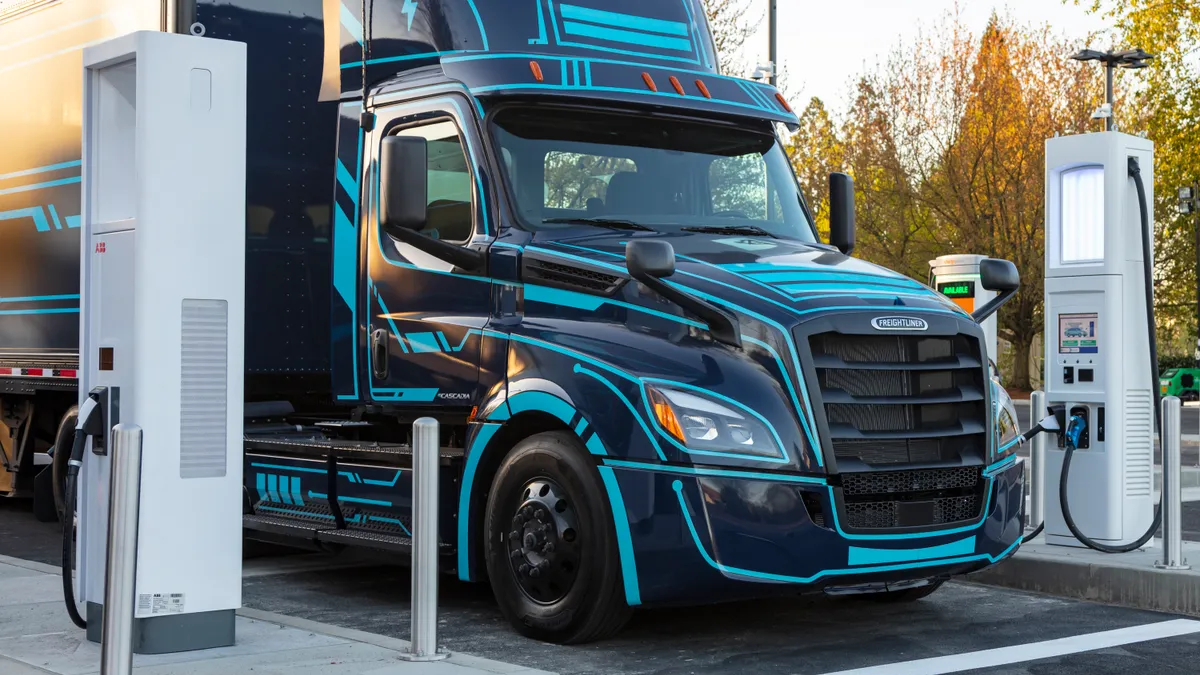Duke Energy, working with electric vehicle infrastructure developer Electrada, has launched a “fleet mobility microgrid” in Mount Holly, North Carolina, that the utility said Thursday is a model for fleet electrification solutions.
The charging hub will serve light-, medium- and heavy-duty electric fleet vehicles, with Daimler Truck North America signed up as a founding participant. The company has a manufacturing facility located near the charging center.
The Duke Energy + Electrada Fleet Mobility Microgrid “is open and ready to help with opportunities for cost savings, new charging options for zero-emission vehicles and strategic guidance,” Duke Energy President Harry Sideris said in a statement.
The microgrid, which includes solar, hydrogen, battery storage and other types of generation, includes six total fleet charging stations ranging from 120 kW to 300 kW, and two level 2 chargers. Duke said it is the first U.S. depot designed for medium- and heavy-duty trucking with charging possible either from the bulk power grid or using 100% renewable energy from the integrated microgrid.
“The unique configuration also provides the opportunity for stakeholders to test and validate software, vehicle and microgrid interoperability to reinforce confident commercial fleet electrification, even in the most challenging or complex locations,” the utility said.
Daimler’s proximity to the EV charging hub — adjacent to the microgrid — creates an “ideal opportunity” to test and demonstrate the technologies, the company said.
"Our collaboration with Duke Energy and Electrada goes beyond infrastructure development – it's about creating a sustainable, scalable fleet electrification solution," said Jeff Allen, senior vice president of operations and specialty vehicles at Daimler. "By providing seamless, carbon-free charging, the Fleet Mobility Microgrid enables our inbound logistics partners to operate with minimal environmental impact.”
Duke has brought the charging hub online as EV sales hit a new record and electricity demand, from transportation and other electrification initiatives, is rising.
"We expect energy consumption to grow at an average annual rate of nearly 2% over the next 26 years, with approximately 35% of that growth coming from greater EV adoption,” Sideris said. “That means by 2050, energy use could be about 50% greater than what it is today.”
While the growth rate of EV adoption has slowed, sales in September made up 9% of new cars sold in the United States, according to Kelly Blue Book.
EV sales in the third quarter of this year were 11% higher than the same period in 2023, according to KBB. But that compares to a 46% increase between the first quarter of 2022 and 2023.
“That’s not unusual with new technologies. Often, sales surge at first as early adopters excitedly jump in, then slow as more skeptical shoppers have to be convinced,” the automotive data firm said. “Price is improving. The price difference between electric and traditional vehicles narrowed in September, indicating greater accessibility.”















